The new Belgian Property Law Code
Download our infographics
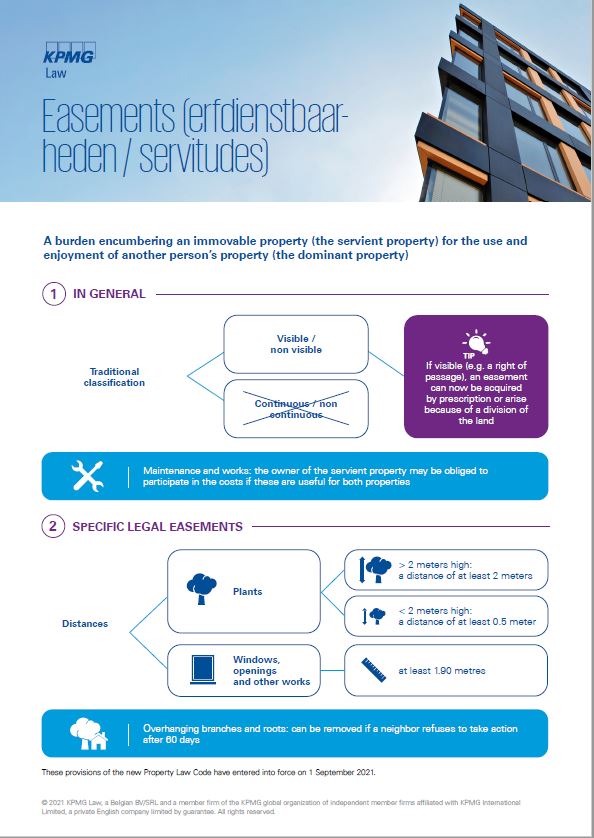 |
EasementsOnly the distinction between visible and non-visible easements has been maintained, whereby a visible easement can now also be acquired by prescription or the division of a plot. The rules on plants and views were incorporated in the new Civil Code and therewith the right to remove overhanging branches if the neighbor refuses to take action within 60 days after a notice of default has been sent. > Download the infographic here
|
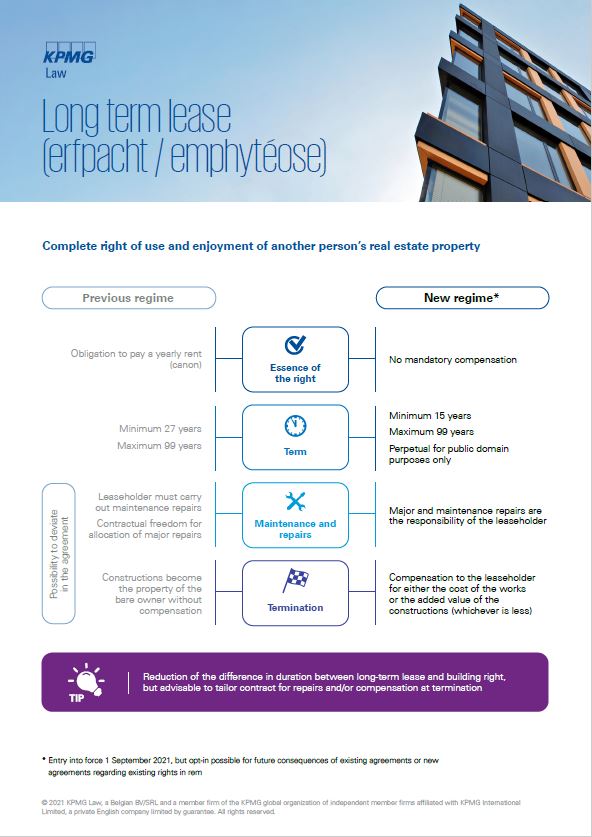 |
Long term leaseCertain key changes concerning the long term lease are the abolition of the obligation to pay a yearly fee (canon), the reduction of the minimum duration of the long term lease to 15 years and the adjustment of the default arrangement for major repairs and the compensation upon termination of the long term lease. > Download the infographic here
|
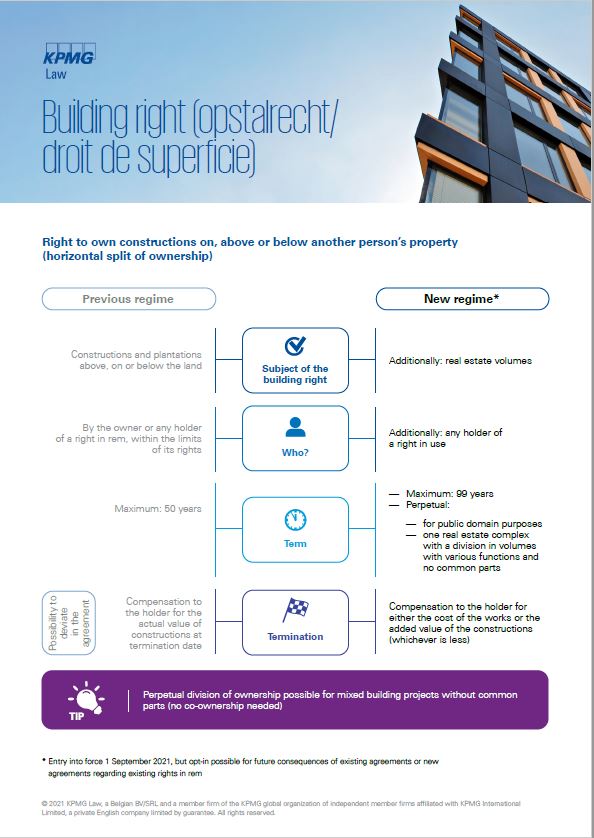 |
Building rightThe main change for the building right is the extension of the maximum duration to 99 years and, in certain exceptional circumstances, even perpetual, which can be interesting for mixed real estate projects to avoid co-ownership. > Download the infographic here
|
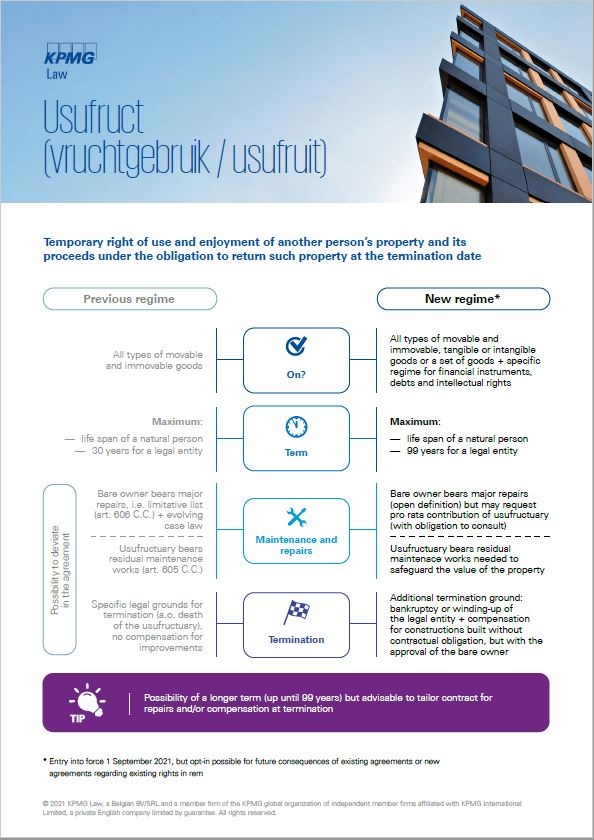 |
UsufructFor usufruct as well the maximum duration (for legal entities) has been extended to 99 years. In addition, some changes were made to the default regulations regarding maintenance and repairs and the compensation due upon termination of the usufruct. Furthermore, a legal framework was created for the usufruct on financial instruments, receivables, and intellectual property rights. > Download the infographic here
|
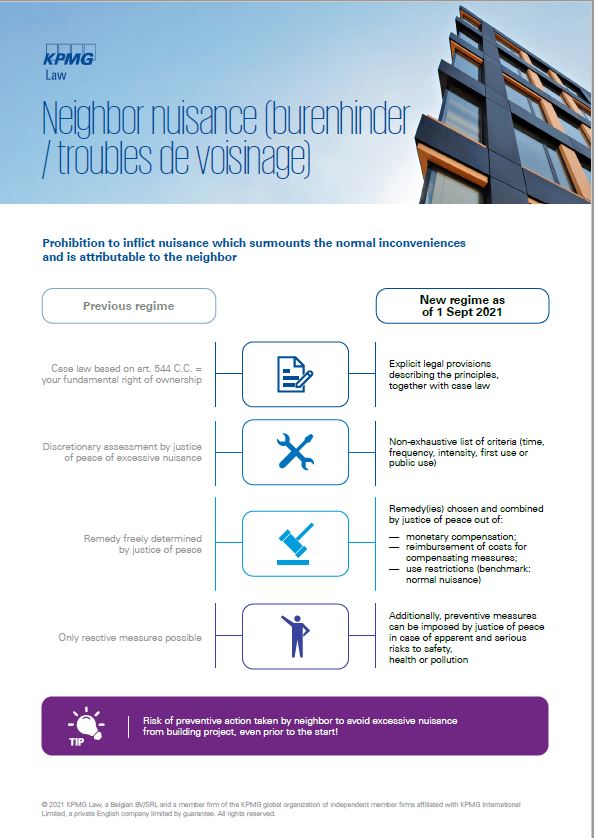 |
Neighbor nuisanceThe regime of neighbor nuisance is now incorporated in the new Civil Code, whereby the discretionary power of the courts to assess the excessive nature of the nuisance and the measures to be taken has been restricted. However, it has been made possible for the courts to impose preventive measures, even before the nuisance starts. > Download the infographic here
|
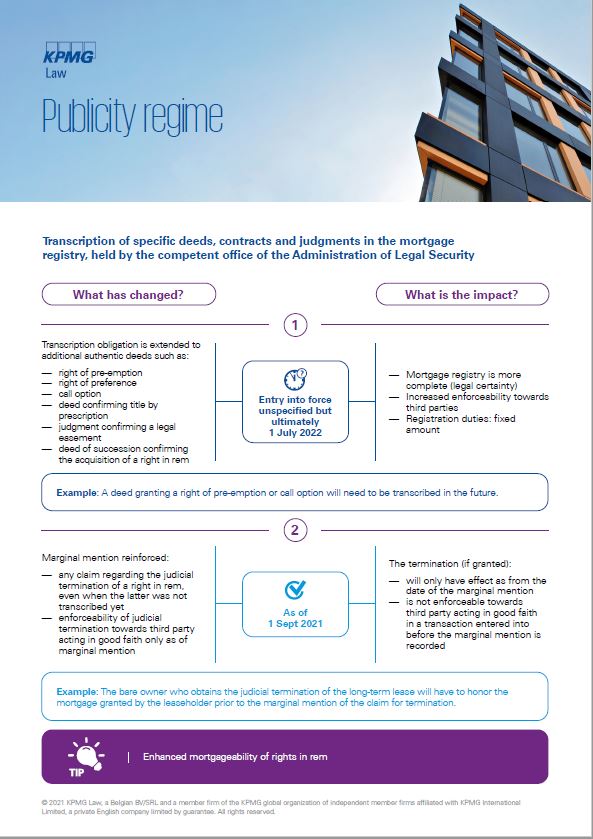 |
Mortgage publicity regimeThe scope of the compulsory transcription by the competent Office of Legal Certainty (“Kantoor Rechtszekerheid/Bureau Sécurité Juridique”) has been broadened, a.o. to deeds containing a preemption right or option right, which increases enforceability against third parties. In addition, in the future (date not yet determined) a marginal mention (“kantmelding/mention marginale”) shall need to be made for any claim regarding the judicial termination of a right in rem in order for the termination to be enforceable towards third parties acting in good faith (such as a bank benefiting from a mortgage on the real estate). > Download the infographic here
|
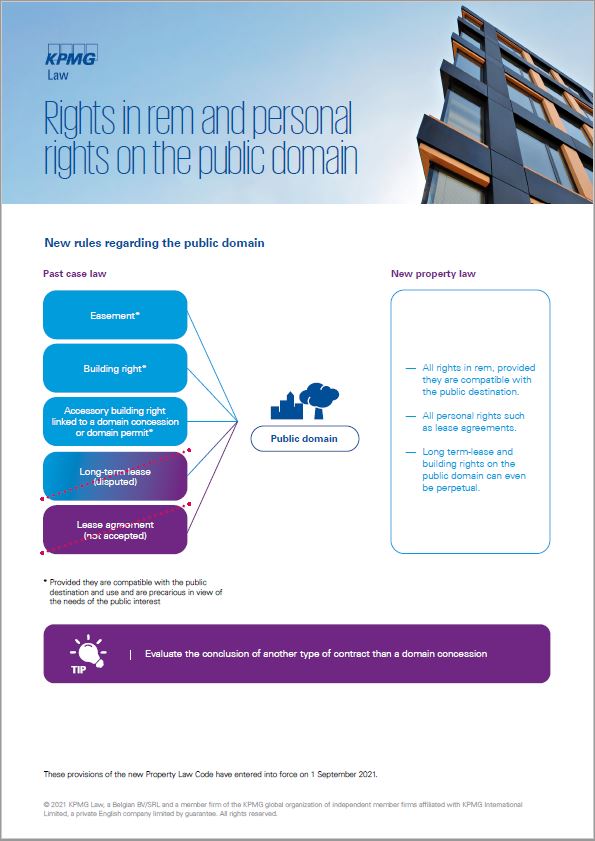 |
Rights in rem and personal rightsThe law reform is intended to increase the flexibility of granting personal rights and rights in rem on the public domain by settling the jurisprudential debate. These rights can be granted on public domain property, provided they are compatible with the public destination (“openbare bestemming/destination publique”). It is therefore not always necessary to fall back on a domain concession. |
Contact your expert


